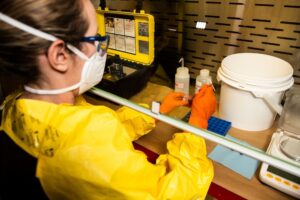The opioid crisis in the United States began in the late 1990s as a result of extensive overuse of prescribed medications. This crisis—or, should we say, full-on epidemic—is still raging today, and has since evolved to include abuse of synthetic opioids (like fentanyl), obtained both through medical prescription and by illicit means. According to the Centers for Disease Control and Prevention (CDC), over a 6-year period between 2013 and 2019, synthetic opioid-involved deaths in the U.S. increased by 1,040% from 1.0 to 11.4 individuals per 100,000. While the relationship between drug overdoses and the COVID-19 pandemic requires further investigation, these devastating statistics, paired with provisional data and other emerging research suggests that the pandemic has only exacerbated the opioid crisis.
Another critical consequence of the widespread prevalence of synthetic opioids is the alarming frequency with which first responders, including emergency medical and law enforcement personnel at all levels, encounter them. Unknown or unexpected contact with a synthetic opioid such as fentanyl or a related compound presents a safety hazard for first responders if they are not prepared with the proper protective equipment. Reliable detection is one way the Science and Technology Directorate (S&T) is working to protect the nation’s first responders as they deal with the crisis on the front lines, and standards play a key role in ensuring the integrity of such vital detection equipment. Where the latter is concerned, DHS S&T is pleased to provide some breaking news.
| READ THE FULL STORY → |
U.S. Department of Homeland Security
www.dhs.gov

